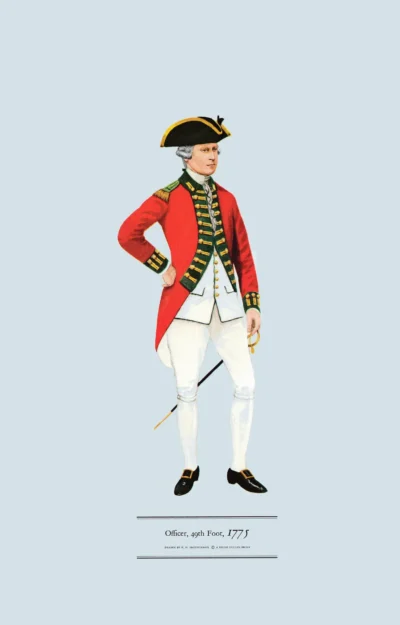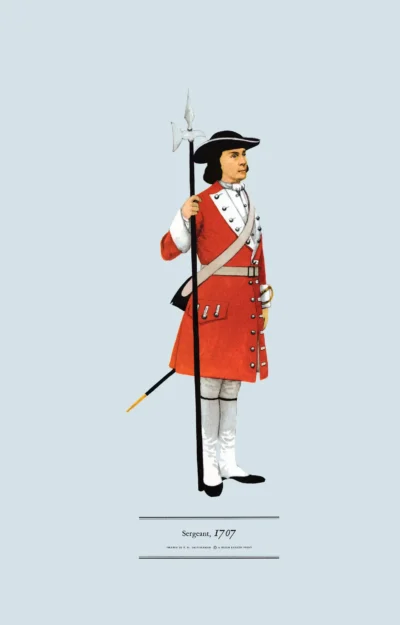Sergeant, Royal Scots, 1707
Original price was: £15.00.£10.00Current price is: £10.00.
Royal Scots and KOSB were merged into 1st Battalion, The Royal Regiment of Scotland in 2006 (scroll down for a more detailed Description)
Published 1965 by © Hugh Evelyn Limited; drawn by Colonel Philip Henry Smitherman (1910-1982), Royal Corps of Signals
Size: c. 24.5 x 37.5 cm [9 ½ ″ x 14 ½ ″] (may vary slightly from printers’ cut 50 years ago)
Printed on on medium cardstock weighing 144 g/sm2 faced in light greyish blue (RGB c. d4e1e8)
Print is STANDARD size – shipping is the same for 1 to 10 prints (based on largest print size in your order) – see Shipping & Returns.
In stock
Description
Raised in 1633 by Sir John Hepburn, The Royal Scots was the oldest Regiment in the British Army until it was merged, in 2006, with the other Scottish Infantry Regiments and finally to merge with the KOSB to form the 1st Battalion, The Royal Regiment of Scotland. Here is a sergeant of the Royal Scots in dress worn by infantry battalions during the Wars of the Spanish Succession. The Royal Scots served under the French King until 1678 then returned home and were placed on the British establishment as His Majesty’s Royal Regiment of Foot in 1684. The regimental dress (except the pipers) was like the rest of the infantry until 1881 when they assumed the doublet and tartan trews. The sergeant is identified by his halberd, obsolete as a weapon, but carried, even in battle, as a badge of rank. The hat was soon altered to the three “cocks”. The NCO’s were clothed like the men of the regiment but ‘wore everything better of its kind’. Other infantry regiments had similar coats, but lapels and cuffs had different colours – the lapel showing the facing colour of the regiment. Uniforms were made by contract to the colonel and checked by the Ordnance Board to a pattern held by them to ensure quality – an arrangement made by Marlborough to prevent his men receiving shoddy clothing (as they had tended to before). Belts and side-arms were bought by the colonel at his discretion, with an allowance given for the purpose. The white gaiters, or spatterdashes, were introduced because of the mud of the Low Countries. A modified form of these was still worn in Highland Regiments with the kilt in the 1960’s.
Source: Tapestry of the Battle of Wijnendael, 1708 at Blenheim Palace, England.
Additional information
| Weight | 0.0131 kg |
|---|---|
| Dimensions | 23 × 37 cm |





